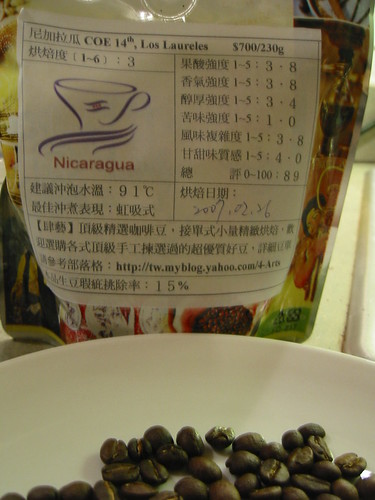So you may be thinking about what zero defects means. There are obvious defects as pictured here via coffeeresearch.org. What we know is that Simon removes any obvious defects found but also sorts the coffee to a more even size and color consistency. This means cleaning a coffee up the hard way with some manual labor. When Simon says zero defects, he's not joking.
Simon can turn a bean up to five times sorting pre-roast and then once more post-roast to identify visible defects or what he determines as off beans that may ruin a cup. This is a very intense and dedicated way to get a better cup. As all searches for a better cup go, it's never easy. Sorting at the roasterie is something that would be cost prohibitive to almost everyone in our American industry beyond the fanatical home roaster. It is the home roaster who has little access to good green that this process is intriguing though because it appears that a little extra sorting could potentially clean up an otherwise funky coffee.
It is a very unique and somewhat extreme approach that at first you may be inclined to question. Rightfully so, but you should give it a go and see what he is looking at and attempt to contemplate the logic behind it a bit. There are two ways to do this. One, you have Simon do this for you and pay him well, plus shipping costs to achieve this. Two, you sit down and sort out some home roast. I suggest you do a high grade coffee like a CoE and compare it to a C-Grade Sumatra. Measure the throw away percent on both and report back to us on the results should you choose to accept this mission...

Image Courtesy of Jason Silberschlag
At first glance it would be easy to throw this out the window and say it's a bit crazy to do this. I think too many people in the industry are easily willing to ignore what others are doing without trying to understand the reasoning behind their choices. The logic may be flawed or it may be correct. Truth is, you don't know what the results are until you take the time and do the experiment for yourself.
Simon's exercise in sorting has a lesson to teach us. Sorting makes a difference. In fact, the simple exercise of sitting down and sorting a few rows of coffee will give you new perspective on exactly what defects are and how one bean can easily ruin a cup. Sort out the defects, roast them and cup them next to the sorted cup. You will then better understand what is causing each cup's components and then the mushrooms may not be so charming any more.
It's not a clean coffee rant today though. It's a question of what is in my cup and why does it taste the way it does? Can you identify the good as well as the bad? Equating input to output and identifying the causes of flavors in the cups is harder than you think.
Doing sorting is like an educational adventure. After a few episodes, you will appreciate the great lots which require less than 20% rejection rates while you will fall apart at the purchase of a green which has a 50%+ rejection rate. Something to think about next time you try any coffee.
As for Simon's coffees, we sampled a Nicaragua CoE#14, 20% CoE espresso Blend, and Idido Misty Valley Grade 1. That last one may strike you as odd for our crew but we have tried a few versions of this coffee in the US (though not Grade 1), so it was to be a comparison cup. It was a strange cup. Simon describes it as orange juice and that's pretty accurate. Not my personal choice of coffees though as I still cling to dreams about an aromatic washed Yirgacheffe that may someday resurface when our fermented Ethiopian naturals fascination ends...

All that aside, Simon achieved something I had not tasted before, previous versions of Misty Valley bordered on rank and pungent, almost rotten fruits at times ready to kick you in the face with their untamed intensity. This offering was balanced and persisted like a heavy perfume that weighed down my nostrils leaving a strong aroma and thick sweetness. It did not really resemble what we had tasted in our cupping sessions or varied trips to famous coffee houses. Shocking indeed.

The Nicaragua was a dark sugar cup, a balanced roast which came out well in the vac pot, being my pick of his offerings. The 15% at the bottom of the label is Simon's rejection rate for the Nicaragua.
The 20% CoE espresso blend was nice and very clean but I have such bias against earthiness in coffees, I would love to replace that Java Jampit component with something else. It was however, on the level with Stumptown's hairbender in that it was ripe and had good fruit in the cup and a defined sweetness. It was brewed in the low 190'sF and pulled very ristretto making for what was a lingering sweet cup with a winey aftertaste and lacking in pronounced bitterness. Again, it was balanced but complex with a heavy candied sweetness which seems to be Simon's signature style.

Go ahead and add meticulous sorting to our wish list along with fresher green and high grown coffees.
